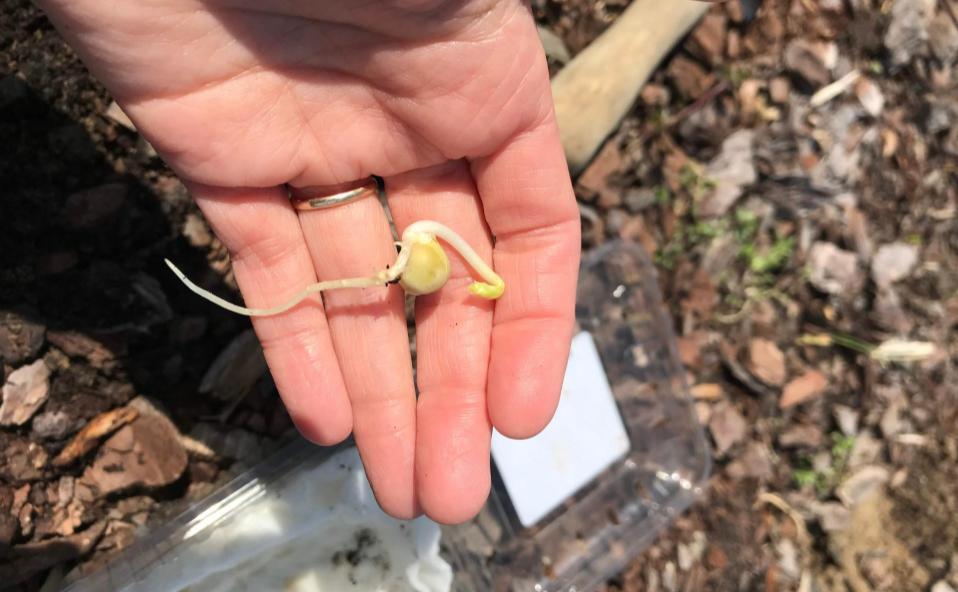It is officially spring, which means it is time to brush off the winter dust and get outside. Here are some helpful tips to get you started this season.
Outdoor Garden and Yard Tips
• Cedar-apple rust disease forms its galls on Virginia cedar (Juniperusvirginiana) in April. The odd-looking galls are at first bright orange gelatinous balls with long “horns” or projections; they later turn brown and become hard. They are the alternate host structure for a disease that does very little harm to the junipers but can be quite destructive to apple trees, hawthorns, and quince.
• Continue planting and transplanting trees and shrubs. Choose quality trees: shade trees should have a single, straight trunk. Planting and transplanting should be completed before the end of June.
• Viburnum leaf beetle is a serious pest of native arrowhead viburnum, cranberry bush, and many others. Look for feeding damage on viburnum and yellow larvae. Control them promptly since they can defoliate plants. Repeated defoliation can result in the death of native viburnums.
• Spotted lanternfly eggs will start hatching late April or early May depending on the weather.
• Plant a butterfly garden – Butterflies add beauty and help pollinate flowering plants. A variety of nectar plants for adult butterflies and host plants (food) for the caterpillars will attract them. Milkweed species is a popular nectar and host plant for the Monarch butterfly.
• Eastern box turtles and various species of snakes are coming out of hibernation and may visit your yard. Box turtles are becoming scarce through much of Maryland because of road mortality and habitat destruction. Observe it but leave it in the wild.
• Many spring bulbs have fully emerged and are flowering. Remove spent flowers but leave the green bulb foliage alone until it yellows and dies back naturally.
• Lawn mowing season begins in April. The height and how frequently you mow your lawn is very important. Cool season grasses such as tall fescue and bluegrass should be maintained between 3 – 4 inches for most of the growing season and no more than 1/3rd of the leaf blade should be removed at each mowing. Always make sure to sharpen your mower blades at the beginning of the season.

Butterflies add beauty and help pollinate flowering plants. Photo taken by Rachel Rhodes.
Vegetable Garden
• Continue to sow lettuce, spinach, Swiss chard, beets and other favorite salad vegetables.
• Thin seedlings of leafy greens, to a few inches apart and eat the ones you pull. Check planting chart for final spacing between mature plants.
• Plant seeds of carrots, turnips and parsnips in deeply worked, well-draining soil.
• Don’t jump the gun with warm season crops; plant outside only after all danger of frost is past. (Night temperatures below 45º F. can damage plants and later fruiting.) Optional: lay down black plastic mulch to warm the soil, two to three weeks before planting warm season crops, like tomato, pepper, eggplant, and melon. Plastic mulch also keeps down weeds. (Biodegradable non-plastic mulch, made out of corn, is now available; www.highmowingseeds.com is one source.)
• Sow beans and corn outdoors late this month or early May, when soil temperatures are above 50º F. (Or pre-start them indoors to get them off to a faster start.)
• Start squash, melon and cucumbers indoors to be transplanted in the garden, in two to three weeks. (These plants also benefit from black plastic or biodegradable mulch.) Or, plant them directly in the garden, in late May through mid-June.
• Start seeds of herbs, including rosemary, thyme, lavender, sage, basil and tarragon. Make cuttings of fresh mint, tarragon and rosemary from potted plants or from stems purchased in food markets. Root the cuttings in soil-less mix, under lights.

Peas are a great easy to grow cool season crop, they perform best with early spring plantings. Photo taken by Rachel Rhodes.
Indoor Plants and Insect Tips
• Groom houseplants by removing dead and diseased foliage or spent flowers; this reduces insect and disease problems and improves their appearance. Gently dust the leaves with a soft rag. If possible, periodically place your plants in the shower to remove dust and to give them a good drink of water. This can revive a tired houseplant and helps to leach soluble salts (from fertilizers) from the soil.
• Fungus gnats are small, harmless black flies that hover around, breed in and feed on moist growing media. Be careful not to over-water houseplants. Growing media should be allowed to dry out before watering again.
• Different types of foraging ants may appear in your home. Try using bait stations to control minor infestations. Liquid and gel formulations are usually quite effective.
For further information, please visit https://extension.umd.edu/queen-annes-county/master-gardener-home-gardening or see us on Facebook @ https://www.facebook.com/QueenAnnesCountyMasterGardeners For more information contact: Rachel J. Rhodes, Master Gardener Coordinator at (410) 758-0166 or by email at [email protected].
University of Maryland Extension programs are open to all people and will not discriminate against anyone because of race, age, sex, color, sexual orientation, physical or mental disability, religion, ancestry, or national origin, marital status, genetic information, or political affiliation, or gender identity and expression.
Don’t miss the latest! You can subscribe to The Talbot Spy‘s free Daily Intelligence Report here



Write a Letter to the Editor on this Article
We encourage readers to offer their point of view on this article by submitting the following form. Editing is sometimes necessary and is done at the discretion of the editorial staff.